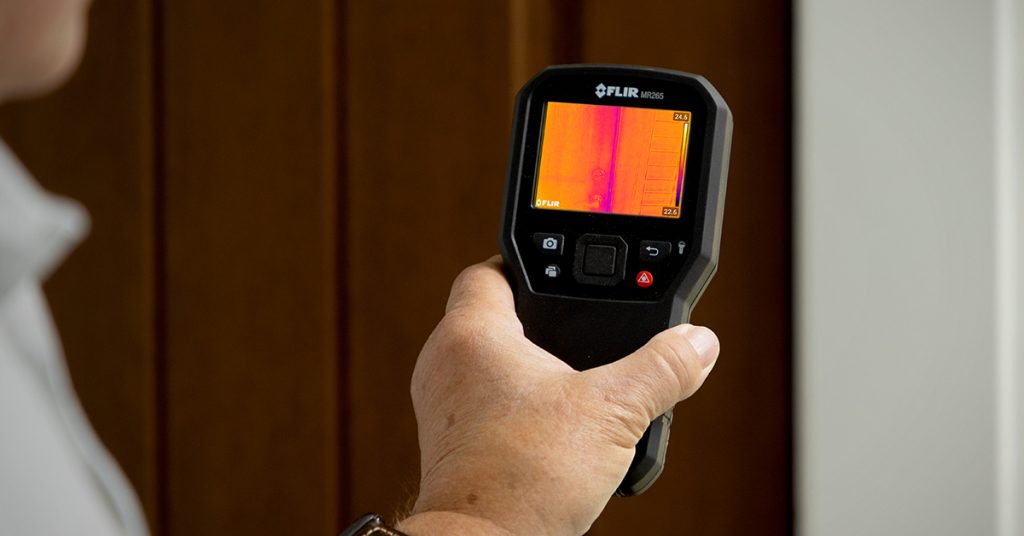Infrared thermography is the process of using a thermal imager to detect radiation (heat) coming from an object, converting it to temperature and displaying an image of the temperature distribution. Images of the detected temperature distribution are called thermograms, and they make it possible to see heat-producing objects invisible to the naked eye. It’s widely-used in predictive maintenance and condition monitoring.

Since all objects above absolute zero (-459.67 degrees Fahrenheit) give off thermal infrared energy, thermal imagers can easily detect and display infrared wavelengths regardless of ambient light. A common example of this is using night-vision goggles to detect objects in the dark. Infrared thermography is commonly used in a variety of industries and applications including:
- Machine condition monitoring
- Building diagnostics like moisture, roof and energy-loss inspections
- Medical imaging including peripheral vascular disease, thyroid abnormalities, and metabolic and inflammatory condition monitoring
- Law enforcement and security imaging
- Chemical imaging
- Earth science imaging
- Electrical system monitoring
- Fluid system monitoring
Specific to plant maintenance and condition monitoring, infrared thermography is used in applications such as:
- Monitoring the electrical and mechanical conditions of a motor
- Bearing inspections (abnormal bearing friction)
- Monitoring refractory insulation
- Locating gas, liquids and sludge levels